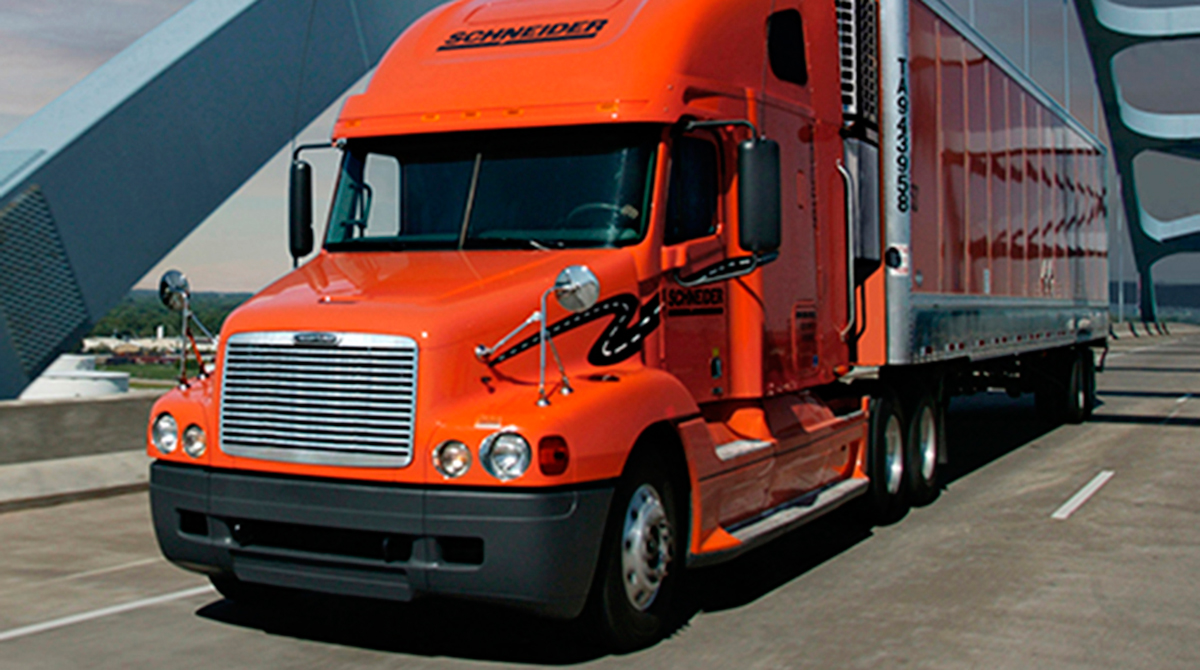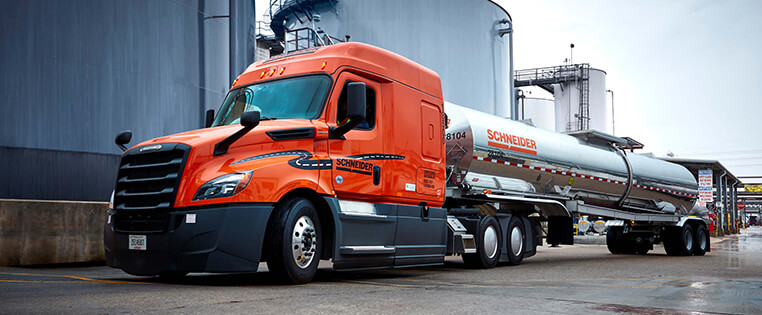
In February, Schneider National reported a year-over-year increase in profit for the fourth quarter of 2020.
The Green Bay, Wis.-based truckload, intermodal and logistics services company reported that net income reached $76.9 million, or 43 cents a diluted share, for the three months ending Dec. 31, a 38% increase from the $55.9 million, 32 cents, it posted in Q4 2019. Total operating revenue increased by 9% to $1.3 billion from $1.2 billion.
Wall Street expected 39 cents per share on quarterly revenue of $1.19 billion, according to Zacks Consensus Estimate.
For the full year, Schneider reported net income of $211.7 million, $1.19, on revenue of $4.6 billion, compared with net income of $147 million, 83 cents, on revenue of $4.7 billion in 2019.
“The most recently completed quarter has provided an ideal backdrop for us to leverage the power of our portfolio of services to not only optimize our base volume commitments, but dynamically capture an increasing share of the dislocated freight needs of our shipper community,” Schneider CEO Mark Rourke said during a conference call with investors. “I think that was especially evident in our truck brokerage revenue.”

Rourke said that the pandemic influenced Schneider’s truckload network configuration and propelled a notable shift in the market capacity mix. He also noted a year-over-year drop in the number of non-family team drivers and an increase in owner-operators securing their own operating authority, but doesn’t consider these trends to be permanent or structural.
“Our brokerage business did benefit from this mix changes as we served an increasing share of the longer length of haul or interregional lanes, including team service with third-party carriers,” Rourke said. “A further accelerant to that success is third-party carriers gaining access to Schneider’s nationwide trailer pools through power-only movements. Integrating this power-only capability into our network truckload offerings allows us to serve trailer pool shippers more broadly in both contract and spot configurations, increasing brokerages top and bottom-line performances.” The Schneider FreightPower digital marketplace, launched Nov. 9, allows the company to more easily reach smaller carriers. Rourke described the Q4 debut of the service a “milestone” for the company.
“Our carrier base is underrepresented in the largest portion of the third-party carrier market, the micro-carrier,” he said. “We define that as having between one and five trucks. We estimate this segment makes up nearly 85% of motor carriers.”
Schneider’s truckload segment saw Q4 revenue decrease 5% to $470.3 million from $494.5 million the prior year, a result of lower network capacity levels that were partially offset by effective yield management actions and growth in dedicated lanes, it said. Promotional, project and spot freight opportunities, along with off-cycle bid activity, positively contributed to revenue in the quarter.

Income for the segment increased 61% to $65.1 million compared with $40.4 million a year aog, the result of yield management actions and $13.3 million in restructuring costs. These gains were partially offset by reduced volume, Schneider said.
Intermodal segment revenue in Q4 increased 3% to $269.3 million from $261.2 million
Income for the segment decreased 23% to $24.7 million from $32.2 million last year.
Logistics segment revenue increased 64% to $374.4 million in Q4 compared with $227.8 million the prior year, which Schneider attributed to brokerage volume growth including truckload overflow freight and increased revenue per order through yield actions. Income increased 173% to $21.6 million from $7.9 million in Q4 2019.
Schneider ranks No. 5 on the Transport Topics Top 100 list of the largest for-hire carriers in North America, and No. 18 on the TT Top 50 logistics companies list.
Source: ttnews.com
